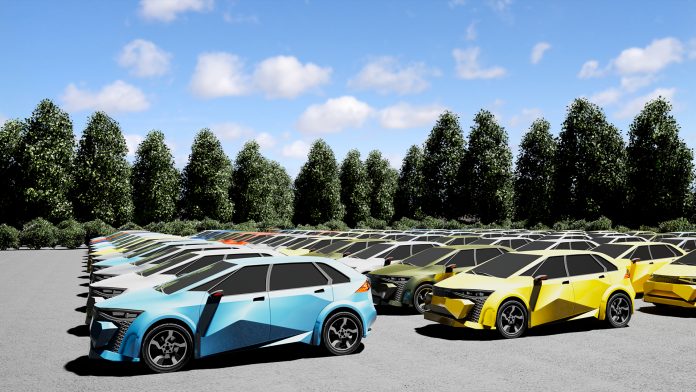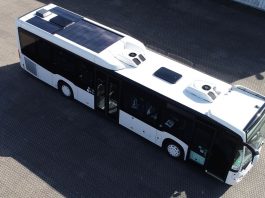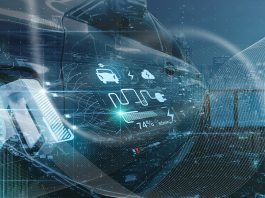Dr Pedro Moura and Diedert Debusscher, on behalf of streamSAVE, outline the project’s plans to develop a streamlined methodology for the evaluation of electric vehicle energy efficiency.
Increasing energy efficiency in the transport sector through the proposal of regulatory measures is one of the key actions of the REPowerEU plan, a European initiative to save energy, diversify the energy supply, and roll out renewable energy. The accelerated electrification of corporate fleets would be key to fulfilling this action, but as the industry faces unprecedented energy costs and a lack of support to accelerate the electrification of car fleets, clear provisions on energy efficiency are needed.
streamSAVE—a three-year EU-funded project co-ordinated by VITO/EnergyVille — aims to help Member States align deemed energy savings estimates with actual savings achieved for a set of priority energy efficiency actions, including for electric vehicles (EVs), which were deemed the highest priority by project stakeholders.
Poor energy efficiency in the transport sector
The Energy Efficiency Directive (EED) and in particular, its Article 7 on energy savings obligations, is one of the most important instruments to drive energy savings in end-use sectors such as buildings, industry, and transport in the EU. However, only 19% of the energy savings measures reported under this article (in the reporting period 2014-2022) target transport, and less than 5% of the cumulative energy savings are realised in the transport sector. This stands in contrast to the soaring number of fleet managers announcing the electrification of their fleets, and the high willingness of company car drivers to switch to an EV.
National energy and climate plans for 2021-2030 show a slight increase in the policy measures targeting transport, but they are still far from the actual savings potential. When asked about the reasons, Member States report the lack of simple yet accurate savings calculation methodologies for energy savings measures in the transport sector. Even where methodologies are available, national authorities are uncertain about compliance with the EED framework.
The streamSAVE project aims to remove these hurdles. This three-year EU-funded project aims to help Member States align deemed energy savings estimates with actual savings achieved for a set of priority energy efficiency actions. One of these actions is the fuel switching between conventional and electric vehicles.
Bottom-up calculations
The project team developed a Guidance Document with a standardised calculation methodology for fuel switching. The methodology is developed in a bottom-up way, meaning that all essential influences on energy consumption are taken into account and that the baseline situation is then compared to the situation after the implementation of the energy efficiency action. The savings are the result of the higher conversion efficiency in an EV, but also of switching fossil fuel to electricity, which is increasingly generated based on renewable resources. Therefore, the conventional options in the methodology include vehicles using diesel, petrol, liquefied natural gas (LNG), and hybrid options, whereas the more efficient options only include EVs.
The calculation of final energy savings for Article 7 focuses on the difference between the specific final energy consumption of the reference versus the more efficient vehicle. The specific energy consumption is given in kWh/100km, being, therefore, the consumption multiplied by the average distance travelled with the vehicle. The methodology also has the option to include the impact of behavioural factors, such as rebound and spill-over. In addition, the evaluation of the specific energy consumption was added to allow for the estimation of savings for hybrid options and different types of vehicles, being evaluated based on the consumption of fuel and electricity, the energy density of the used fuel, as well as the share of the distance travelled using electricity or fuel.
The calculation of the impact on energy consumption (Article 3) can be done using final or primary energy. Therefore, in the case of using final energy, the calculation for Article 7 can be used. In the case of using primary energy, instead of directly evaluating the savings, the energy consumption of the reference and efficient vehicles must be evaluated separately in order to allow the use of different primary energy factors for the conversion, since there is a fuel switching between the reference and efficient vehicle. The same occurs in the calculation of greenhouse gas savings, as due to fuel switching, different emissions factors must be used for the reference and efficient vehicles.
Indicative values for benchmarking
For each of the parameters used in the calculation methodology, the Guidance Document proposes a set of indicative values, based on EU-wide data. That is the case for parameters such as the specific energy consumption of the reference vehicles; specific energy consumption of the efficient vehicles; distance travelled; emission factors; primary energy factors; and share of the respective energy carrier. Such values can be used for benchmarking or as a backup solution every time such data is not available at the national level.
The specific energy consumption of the reference vehicles was calculated based on the CO2 emission performance standards for cars and vans. Therefore, the indicative values present an update of the reference values within the timeframe 2020-2030. Additionally, the values can be updated every year using the average carbon dioxide emissions from new cars and vans considering the most recent data. The EU average values for cars were assessed with a weighted average considering the percentage of cars in use by fuel type. For buses and trucks, the preliminary CO2 baseline for heavy‐duty vehicles was used. However, all data can and should be adjusted to national circumstances by using data for the sold vehicles in each country.
The energy consumptions were then calculated considering the indicative values for the emission factors for each option of fuel. The values for specific energy consumption of efficient vehicles were based on the typical electricity consumption of battery electric vehicles for cars, vans, trucks, and buses. The distances travelled were assessed considering the road traffic statistics averaged for EU-27 by type of vehicles (in million vehicle-kilometers) and the number of vehicles by type. Such values can also be adjusted to national circumstances using national statistics.
Finally, the primary factors and emissions factors for energy carriers are taken from Annex VI of the regulation on the monitoring and reporting of greenhouse gas emissions. National values for the emission factors are reported every year and are also available. The share of the respective energy carrier on the final energy consumption was determined using the EU27 (2019) Eurostat data for the final consumption in the road transport sector. The shares of energy carriers can be adapted to the national level according to the ‘complete energy balances’ of the Eurostat database.
Open access online tool and training module
The collaborative platform of streamSAVE includes a training module where members can use these methodologies as an online tool or download a spreadsheet to make the first estimates of energy savings delivered by one of these Priority Actions (PAs). In addition to the calculation formulas for Articles 3 and 7, other aspects can be consulted in the guidance, such as indicative calculation values per parameter based on EU-wide data, reference consumption or baseline, correction factors for behavioural effects, costs and benefits, next to calculation formula and related indicative values for estimating CO2 savings.

By selecting the options for the type of vehicle and energy carrier, the platform automatically provides the indicative values associated with such options and calculates the savings. However, it is possible to simultaneously provide the national values for the primary energy factor and emission factor to adapt the values for the national reality. It is also possible to use national data for the specific energy consumption of the reference and efficient vehicles, as well as for the distance travelled, enabling the calculation for the specific data associated with any policy at the national level, but also for a specific fleet using data specifically collected to such a fleet. The use of such data for the distance travelled is very important, due to the data discrepancies between countries and the lack of recent data at national levels.
Feedback from the industry
In September, streamSAVE together with AVERE (the European Association for Electromobility) brought together key actors from the European Commission and several industrial stakeholders to take a deep dive into the methodology.
When discussing how the project could support industrial stakeholders in the electrification of corporate fleets, several points were addressed. Though the methodology developed in streamSAVE will not directly ensure a higher adoption of EVs, Member States would benefit from this support in designing dedicated and effective policy measures, which would, in turn, lead to more EVs and the overall electrification of transport. It was also mentioned that for industry, electricity prices and costs are the main incentives to switch, not the energy savings as such.
However, as the REPowerEU plan proposes increasingly ambitious targets in the EED, the importance of expected and realised savings will increase. Therefore, transparency on how savings are reported is crucial, as is tackling the challenges around data availability.

In terms of improving data collection and fleet monitoring, it was shared that one obstacle lies in determining distances travelled due to the data discrepancies between countries and the lack of recent data at national levels. Potential solutions include collecting data from vehicles in mandatory periodic inspections, mandating data sharing from fleet managers, communicating with fuel card companies who know the actual distance and fuel used, and lastly, monitoring information on distance using fleet software.
Ultimately, improvements are needed to ensure broad public access to charging infrastructure across the EU, to increase co-ordination between EU Regulations such as AFIR and TEN-T guidelines, and lastly, to implement comprehensive user information to raise consumer trust.
About streamSAVE
The streamSAVE project aims to streamline energy savings calculations and provide support to Member States to increase their chances of successfully and consistently meeting their energy efficiency targets. The project specifically focuses on Article 3 and Article 7 of the EED, which are dedicated to energy efficiency targets and national energy savings obligations, respectively.

Annex V of the EED allows various approaches to calculate energy efficiency savings, namely deemed savings, metered savings, scaled savings, or surveyed savings. Nevertheless, in the context of calculating Article 7 savings, the deemed savings approach is the one most commonly used, in addition to energy savings calculated using standardised methodologies. Therefore, streamSAVE focuses on bottom-up calculation methodologies of standardised technical actions.
The stakeholder consultation that was carried out by the consortium during October and November 2020 indicated two issues: existing bottom-up methodologies are not extensively covering the actual savings potentials, and where methodologies are available, Member States are uncertain about compliance with the EED framework.
The streamSAVE project aims to take away these hurdles by streamlining calculation methodologies for actions that have a high potential for energy savings, and which were indicated as priority issues by the Member States. These are the so-called Priority Actions, with a total of ten PAs in two cycles: building automation and control systems, refrigeration systems, lighting systems, electric vehicles, heat recovery, small-scale renewable central heating, actions to alleviate energy poverty, replacement of electric motors, behavioural changes, and modal shift for freight transport.
The streamSAVE project received funding from the H2020 Programme under grant agreement N° 890147. The content of this website reflects only the author’s view. The European Commission is not responsible for any use that may be made of the information it contains.
Dr Pedro Moura
Assistant Professor
University of Coimbra
Diedert Debusscher
Project Manager Clean Energy Transition and Green & Healthy Buildings Europe
European Copper Institute
https://www.uc.pt/en
https://copperalliance.org/regional-hubs/europe/
https://streamsave.eu/
contact@streamsave.eu
Please note, this article will also appear in the twelfth edition of our quarterly publication.









